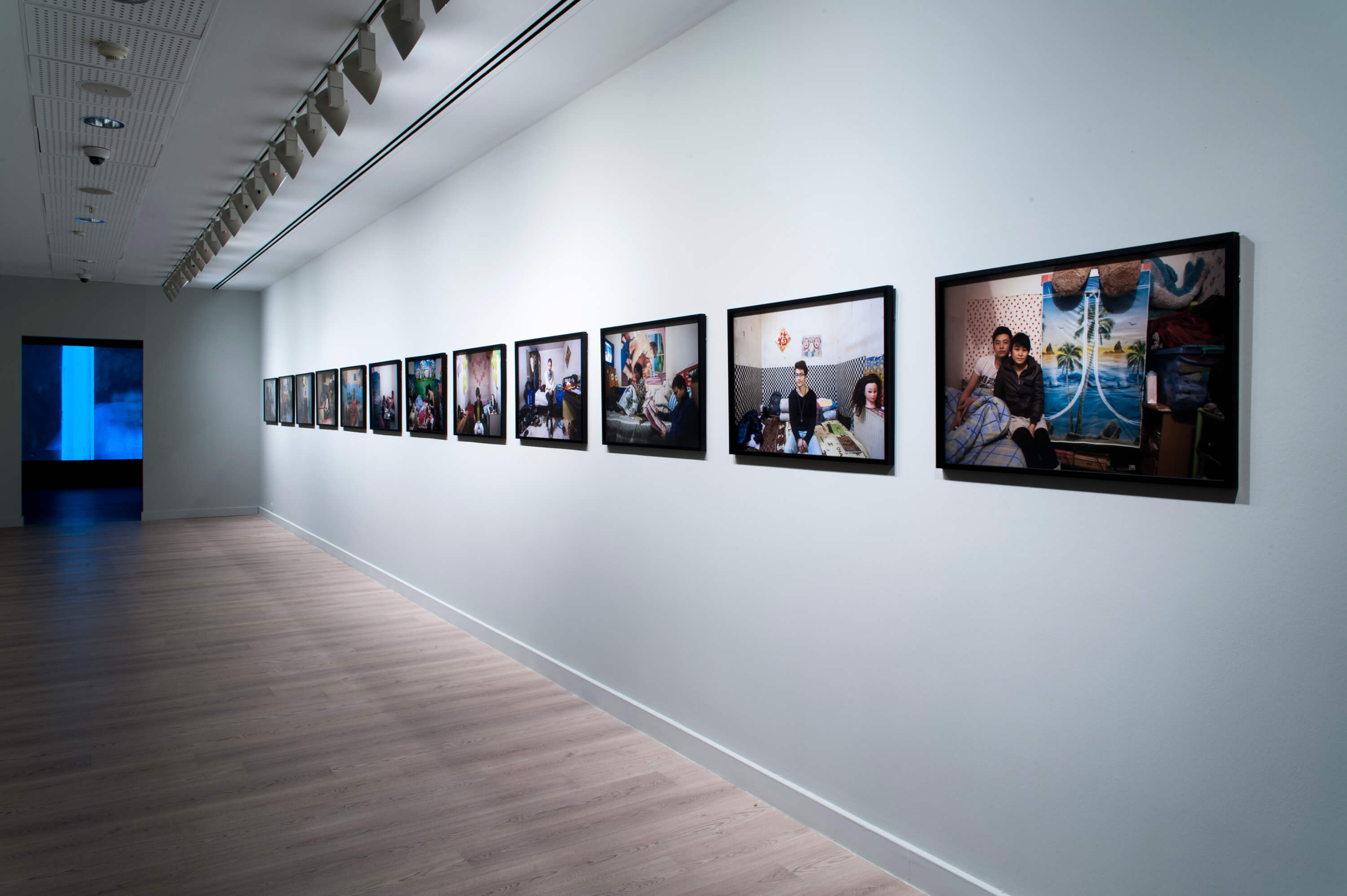10 October 2017
Pera Museum, in collaboration with Istanbul Foundation for Culture and Arts (İKSV), is one of the main venues for this year’s 15th Istanbul Biennial from 16 September to 12 November 2017.
Through the biennial, we will be sharing detailed information about the artists and the artworks. In this series of photography Sim Chi portrays people living in the former air-raid shelters.

In the late twentieth-century, a twentyfour- hour non-stop service culture emerged in many of the world’s cities. In industries such as hospitality, cleaning, catering and waste disposal, a constant feed of human labour is required. In many places today, from the US to China, inexpensive migrant labour is used – amid unregulated, often exploitative and dangerous conditions.
In Beijing, it is estimated that upwards of one million of the city’s inhabitants are low-wage migrant workers living literally underground in the city’s former air-raid shelters. These underground spaces of Beijing were first built by Mao Zedong as protection against Soviet air strikes; in the 1990s, among economic reforms, they were partly privatised and incorporated into newly built above-ground residential housing, and leased at a low cost. Today, they are home to many of the city’s waiters, security guards, cleane rs, cooks, nannies and drivers who serve one class but belong to another.
Sim Chi Yin’s project The Rat Tribe (2011– 14) is a portrait of the migrants inhabiting these 6,000 basements and air raid shelters, which amount to nearly a third of the city’s underground spaces. Taken over a five-year time span, Chi Yin’s photographs adopt – with deliberate irony – the pejorative name (‘rat tribe’) coined by the Chinese media for this layer of society that resides underground in Beijing, sleeping in cramped quarters with no or little natural light and only a modicum of comfort inorder to live within proximity to the city centre where they work. A portrait of the all-too-physical costs of globalisation, Chi Yin’s project calls attention to the effects of global capital in cities, while putting a human face on the realities of migration and exploitation that some are never forced to examine. Despite the harsh realities depicted in these photographs, we also catch a glimpse of human individuality breaking through the surface: they show how the walls and interiors are decorated to express the personality and pride of those leading even the most precarious of lives. And once above ground, these so-called ‘rats’ look no different from their counterparts who live upstairs.

Pera Museum, in collaboration with Istanbul Foundation for Culture and Arts (İKSV), is one of the main venues for this year’s 15th Istanbul Biennial from 16 September to 12 November 2017. Through the biennial, we will be sharing detailed information about the artists and the artworks.

Pera Museum, in collaboration with Istanbul Foundation for Culture and Arts (İKSV), is one of the main venues for this year’s 15th Istanbul Biennial from 16 September to 12 November 2017. Through the biennial, we will be sharing detailed information about the artists and the artworks.

Pera Museum, in collaboration with Istanbul Foundation for Culture and Arts (İKSV), is one of the main venues for this year’s 15th Istanbul Biennial from 16 September to 12 November 2017. Through the biennial, we will be sharing detailed information about the artists and the artworks.
Tuesday - Saturday 10:00 - 19:00
Friday 10:00 - 22:00
Sunday 12:00 - 18:00
The museum is closed on Mondays.
On Wednesdays, the students can
visit the museum free of admission.
Full ticket: 300 TL
Discounted: 150 TL
Groups: 200 TL (minimum 10 people)